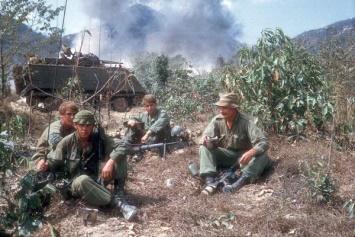Looking for Trouble
Official Historian of the Vietnam War Ashley Ekins details the last foray into the dreaded Long Hai hills by the 1st Australian Task force, known as Operation Hammersley. To read this article, purchase Wartime here.
Operation Hammersley began on 10 February 1970 and experienced constant contacts with the Viet Cong’s D445 Battalion. But the biggest threat to the Australians came from mines, many of which had been lifted from their own barrier minefield near Dat Do.
On what became known as “the Black Day in the Long Hais”, eight Australians were killed in two separate mine incidents. Corporal Jim Barrett was the last member of 8RAR to die that day when he inadvertently stepped outside an area cleared by the engineers while waving a helicopter into a clearing. He stepped on a mine and was killed instantly. His story can be read here.
Journalist John Fairley joined 8RAR in the Long Hais on 21 February and captured fascinating images of the men as they performed their duties. He also took a cinecamera which he used to film parts of the operation.
One of the lighter incidents which took place during Operation Hammersley involved the New Zealand Forward Observer party, Lieutenant Angus ‘Gus’ Rivers and Gunners Rod Simpson, Michael ‘Brutus Brunton and Wayne Radavanovich and the Officer Commanding 8RAR’s C Company, Major David Rankine MC.

Photo courtesy of Rod Simpson
When a tin of condensed milk, packaged in Singapore and containing dairy product from New Zealand was liberated from the Viet Cong, Major Rankine, asked dryly if the Kiwis were working for the enemy.
Part of an interview with Rod Simpson describing the incident and the fate of the milk, can be listened to on the New Zealand Government’s Vietnam War web page Memories of New Zealand and the Vietnam War here.